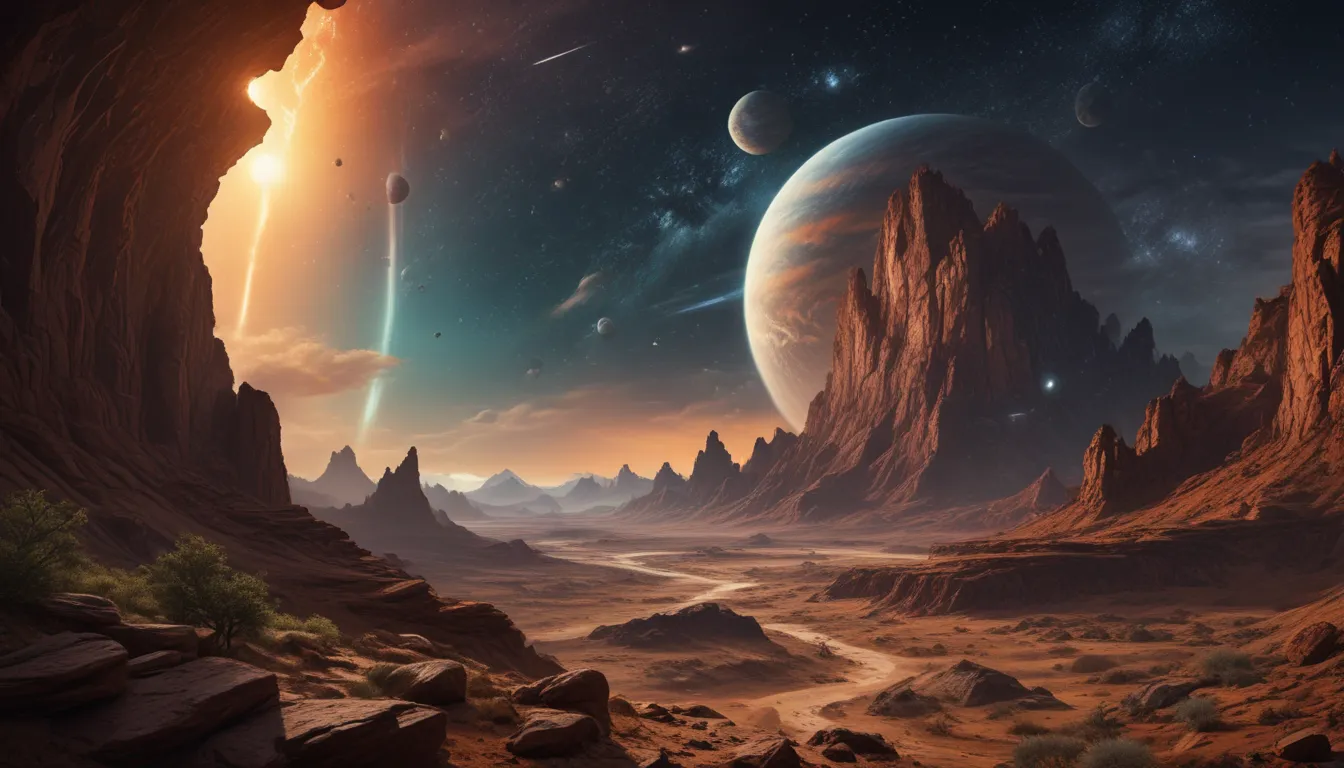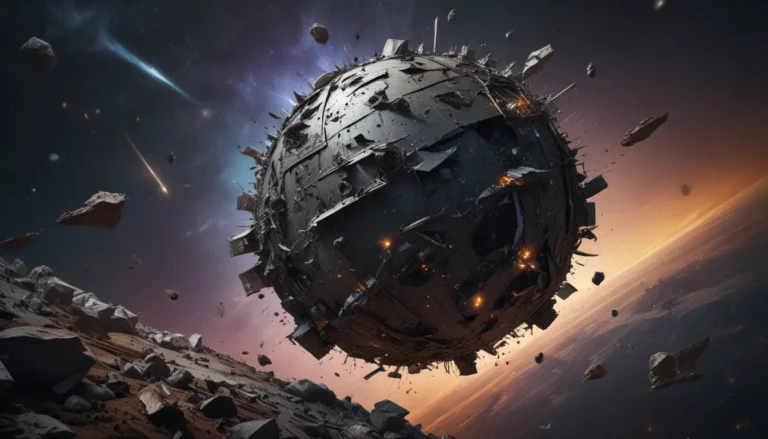The pictures we use in our articles might not show exactly what the words say. We choose these pictures to make you interested in reading more. The pictures work together with the words but don’t take their place. The words still tell you the important facts.
Space weathering is a captivating process that transforms celestial bodies in our universe, altering their appearance and composition through various factors such as radiation, micrometeoroid impacts, and solar wind interactions. This phenomenon has intrigued scientists and space enthusiasts alike, shedding light on the mysteries of the cosmos. In this article, we will embark on a journey through the intriguing world of space weathering and uncover 20 unbelievable facts that illuminate this cosmic phenomenon. From the darkening of asteroids to the development of lunar swirls, we will delve into the fascinating effects of space weathering and its impact on our understanding of the universe.
Understanding Space Weathering:
Space weathering is a transformative process that affects celestial bodies exposed to the harsh conditions of outer space. This phenomenon is driven by factors such as solar radiation, cosmic rays, micrometeoroid impacts, and vacuum conditions, leading to alterations in the physical and chemical properties of objects in space.
-
Space weathering impacts a wide range of celestial bodies, including the Moon, asteroids, comets, and even spacecraft. These objects undergo significant changes over time due to the relentless bombardment of high-energy particles and environmental effects.
-
One of the prominent effects of space weathering is the darkening of celestial body surfaces, caused by the accumulation of fine dust particles known as regolith and the formation of microscopic glass-like structures called agglutinates.
The Role of Micrometeoroid Impacts:
Micrometeoroid impacts play a crucial role in the process of space weathering, as these tiny meteoroids collide with the surfaces of objects, triggering shockwaves, melting, and vaporization of surface materials. These impacts contribute to the overall transformation of celestial bodies over time.
Solar Wind Interaction:
Solar wind, composed of highly energized particles from the Sun, also contributes to space weathering. These particles bombard the surfaces of celestial bodies, leading to chemical reactions and alterations in mineral compositions. The interaction of solar wind with surfaces plays a significant role in shaping the appearance of these objects.
-
The alterations caused by space weathering can lead to changes in the physical properties of celestial bodies, including surface roughness and the formation of tiny craters. These alterations give celestial bodies a weathered appearance and provide insights into their geological history.
-
Over time, space weathering can erode the sharp edges and features of rocks and boulders on the Moon and other rocky bodies in the solar system, a process known as "space rounding" attributed to continuous micrometeorite bombardment.
Implications of Space Weathering:
Space weathering has far-reaching implications for our understanding of celestial bodies and the challenges it poses to future space exploration and colonization. Understanding the effects of space weathering on human-made structures is crucial for designing robust and long-lasting spacecraft and habitats for space exploration.
- The study of space weathering is a complex and ongoing process, with scientists actively researching the phenomenon through the analysis of samples returned from space missions and laboratory experiments. By unraveling the mysteries of space weathering, researchers aim to deepen their understanding of this fascinating cosmic phenomenon.
Historical Perspectives:
The term "space weathering" was first introduced by renowned planetary scientist Eugene Shoemaker in the late 1960s. Shoemaker recognized the importance of studying the effects of space on the surfaces of celestial bodies, paving the way for further research in the field.
- The Lunar Reconnaissance Orbiter (LRO) has been instrumental in providing valuable data on space weathering processes on the Moon. Images and measurements captured by LRO instruments have enabled scientists to study the lunar surface in unprecedented detail, enhancing our understanding of space weathering effects.
Unraveling Cosmic Mysteries:
Space weathering affects the visibility of celestial bodies and can lead to the creation of unique surface features such as lunar swirls. These intricate patterns on the Moon's surface are believed to result from interactions between the solar wind and the Moon's magnetic field, showcasing the complexity of space weathering processes.
-
By studying space weathering, scientists gain insights into the evolution and geologic history of objects in our solar system. The physical and chemical changes induced by space weathering provide valuable clues about the past processes that have shaped these celestial bodies.
-
Space weathering can also impact the thermal properties of objects, causing temperature variations on their surfaces. This phenomenon has significant implications for the exploration of asteroids and other small bodies in space, influencing their physical characteristics and behavior.
Beyond Our Solar System:
The study of space weathering extends beyond our solar system, offering insights into the processes occurring in other planetary systems throughout the universe. Understanding how celestial bodies are weathered in space provides a broader perspective on the evolution and composition of celestial objects beyond our immediate surroundings.
- Some materials, such as highly porous rocks, are more susceptible to space weathering due to their intricate structures. The space environment can dramatically alter the appearance and properties of these materials, highlighting the diverse effects of space weathering on different types of objects.
Conclusion: Appreciating the Marvels of Space Weathering
Space weathering remains an enigmatic and intriguing phenomenon that continues to captivate researchers and enthusiasts alike. By exploring the effects of space weathering on celestial bodies, we gain valuable insights into the history and evolution of our universe. Each discovery and observation shed light on the complex interactions shaping our cosmic surroundings and inspire further exploration into the wonders of space weathering.
As we gaze up at the night sky, let us marvel at the intricate processes unfolding in the vastness of space, where even the smallest particles can leave an indelible mark on celestial bodies. The ongoing research and discoveries in the field of space weathering promise to unveil new mysteries and deepen our understanding of the universe's fascinating transformations. Let us continue to explore, learn, and appreciate the wonders of space weathering, a cosmic phenomenon that reminds us of the enduring beauty and complexity of our cosmic home.






